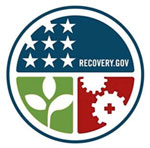-Staff Writer-

WASHINGTON (FinalCall.com) – A congressional oversight panel report released in mid-December found that the federal government’s leading foreclosure prevention program, the Home Affordable Modification Program (HAMP), will only modify less than five percent of the loans that will go into foreclosure by program end.
Former Delaware Senator Ted Kaufman chairs the five-member panel convened in 2008 to “review the current state of financial markets and the regulatory system.” The panel says if current trends hold, HAMP will prevent only 700,000 foreclosures–far fewer than the three to four million foreclosures that the Treasury Dept. initially aimed to stop, and vastly fewer than the eight to 13 million foreclosures expected by 2012.
The report also found the program will only spend a fourth of the $50 billion allocated.
“Millions of Americans facing foreclosure can find no comfort in the idea that the government is doing everything it can to help them. The statements of Treasury officials regarding the foreclosure crisis sound hollow, as if they’ve given up trying. They’re not even going to use all of the resources available to them,” said John Taylor, president and CEO of the National Community Reinvestment Coalition.
When Bill and Jennifer Pierce heard that news, their frustration was apparent. “We’ve been trying to save our home and get a modification for months. It’s one thing after another, one delay after another and we just feel insecure about the whole process,” Mr. Pierce told The Final Call.
“The government is supposed to be helping us. Not making our lives a living nightmare. They’re not helping as many people as they could, plus they’re not even going to spend all the money they have to help people? It just doesn’t make any sense.”
In the eight months since the panel’s last report on HAMP, the Treasury Dept. has made minor tweaks to the program, but the changes have not resolved the panel’s core concerns.
In addition to the program’s poor performance in preventing foreclosures despite repeated urgings from the panel, the Dec. 14 report found the Treasury Dept. has failed to collect and analyze data that would explain the program’s shortcomings, and does not have a way to collect data for many of HAMP’s add-on programs.
The agency, according to the report, has refused to specify meaningful goals to measure HAMP’s progress, while the program’s sole initial goal–to prevent three to four million foreclosures–has been repeatedly redefined and watered down.
Tim Massad, acting assistant secretary for financial stability at the Treasury Department, said it is important to recognize many people have received help under the program and HAMP’s true legacy will be the standard it set for modifications going forward.
Mr. Massad said in a conference call with reporters, “We’ve set a new standard for the industry. There were very few successful proprietary models before HAMP started.”
“Instead of recognizing and improving poor performance, they’re acting out an elaborate shell game, in which they hide the ball from the real problem: Millions of Americans are heading to foreclosure, and the solution isn’t working,” said Mr. Taylor.
The report found the Treasury Dept. has failed to hold loan servicers accountable when they have repeatedly lost borrower paperwork or refused to perform loan modifications.
The agency has essentially outsourced responsibility for overseeing servicers to Fannie Mae and Freddie Mac, but Freddie Mac in particular has hesitated to enforce some of its contractual rights related to the foreclosure process, arguing doing so “may negatively impact our relationships with these seller/servicers, some of which are among our largest sources of mortgage loans.”











